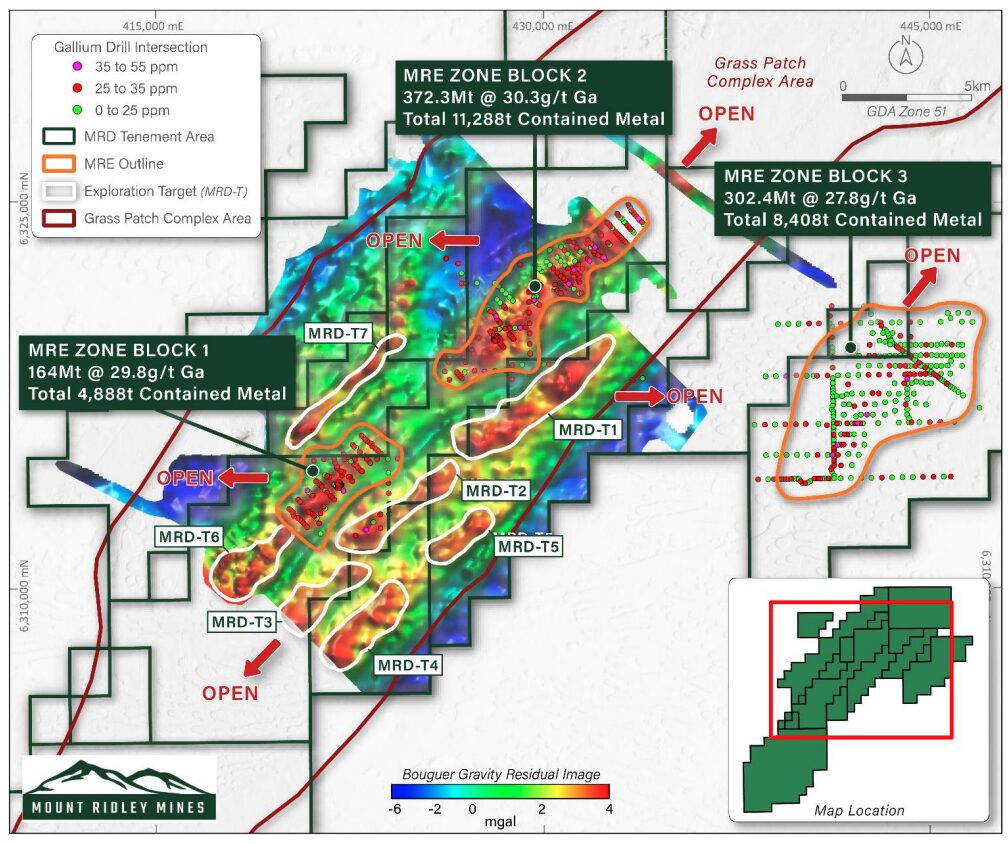Mount Ridley Mines defines seven new gallium-REE targets

Mount Ridley has painted a new picture of its namesake project in WA, featuring more high-priority gallium-REE targets. Pic: Getty Images
- MRD finds seven new REE and gallium target zones following a geophysical review
- The targets form a 33km-long untested corridor
- The company believes the new results highlight upside across the project
Special Report: Mount Ridley Mines has boosted its understanding of the scale and potential at its namesake project near Esperance after a major geophysical reinterpretation by Core Geophysics.
The review has refined the geological model controlling rare earth element and gallium mineralisation, and has outlined multiple corridors for potential resource growth.
It has also identified seven high-priority target zones, forming an entirely untested 33km corridor directly adjacent to Mount Ridley’s (ASX:MRD) gallium resources in Block 1 (164.1Mt at 29.8ppm) and Block 2 (372.2Mt at 30.3ppm).
The most prospective zone extends for 12.8km east of the current resource, marking a compelling near-surface expansion opportunity.
Several of the new targets display the same gravity and magnetic signatures seen in the known resource areas, but none have been drilled – underscoring a major exploration runway.

New exploration corridors
The company believes a key outcome of the reinterpretation is the relationship between mineralisation and coincident gravity and magnetic highs, delivering a framework for ongoing targeting.
Airborne EM data further supports the model, mapping deeper weathering profiles associated with thicker clay-hosted REE-gallium mineralisation.
Previous drilling at Keiths (Block 1) and Winstons (Block 2) demonstrated the presence of elevated heavy rare earths with the new corridors considered prospective for further enrichment.
In addition to the near-resource targets, recently acquired tenure to the north and west of Mia (Block 3) has revealed additional zones, expanding the project footprint.
Opportunities for near-term drilling
MRD non-executive director Pedro Kastellorizos said by combining AEM, gravity and magnetic datasets, Mount Ridley now had a highly predictive exploration framework that clearly aligned with where REE–gallium mineralisation had been discovered.
“The seven new targets display the same geophysical signature as Blocks 1 and 2 yet remain entirely untested, giving us strong confidence in their potential to add to the existing resource,” he said.
“The 12.8km corridor east of the current resource areas, in particular, stands out as a compelling priority for near-term drilling.
“These results effectively validate our exploration approach and confirm that the geophysics is mapping the key geological controls that govern REE–gallium enrichment at Mount Ridley.”
Upcoming exploration work
The Mount Ridley team has started re-assaying existing sample pulps to better define how gallium, rare earths and other critical minerals are distributed across the key mineralised zones.
At the same time, work programs assessing the scandium resource potential and heavy rare earth enrichment within Blocks 1 and 2 are underway, aimed at unlocking additional value within the existing footprint.
To support targeting beyond the resource areas, new ground gravity surveys are being planned to extend coverage along major anomaly trends to the northeast and southwest.
This article was developed in collaboration with Mount Ridley Mines, a Stockhead advertiser at the time of publishing.
This article does not constitute financial product advice. You should consider obtaining independent advice before making any financial decisions.
Related Topics

UNLOCK INSIGHTS
Discover the untold stories of emerging ASX stocks.
Daily news and expert analysis, it's free to subscribe.
By proceeding, you confirm you understand that we handle personal information in accordance with our Privacy Policy.








